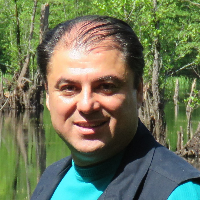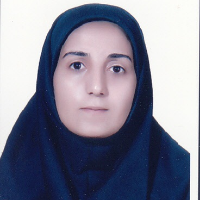Ecosystem services of Hyrcanian Forests based on the Common International Classification of Ecosystem Services (CICES) Method
When evaluating the sustainability of any subject, appropriate indicators must be selected and utilized. The functions and services of forest ecosystems serve as indicators of their capacity and effectiveness. Therefore, to align with fundamental policies regarding forest resources and to facilitate planning, decision-making, and success in this field, it is crucial to fully understand these capacities and effective indicators. This research aims to identify, weight, and prioritize the functions of Hyrcanian forests in Iran based on the Common International Classification of Ecosystem Services (CICES) method.
In this study, the functions, goods, and services of forest ecosystems were first extracted using the CICES method, which is recognized as one of the most comprehensive classification systems for ecosystem functions and services. Subsequently, the functions, goods, and services of Hyrcanian forests were identified through the Delphi method, incorporating insights from experts and specialists. Data were collected via field surveys, random sampling, questionnaires, and face-to-face interviews. The Delphi group comprised 50 experts in forest sciences with a minimum of five years of relevant experience who provided their opinions on the identification of functions, goods, and services related to Hyrcanian forest ecosystems. After preparing the questionnaire, respondents rated their answers using a five-point Likert scale. The reliability of the questionnaire was assessed using Cronbach's alpha coefficient, which yielded a value of α = 0.97, confirming its reliability. Following the completion of the questionnaires by experts, multi-criteria decision-making methods were employed to determine the weight of the functions, goods, and services of Hyrcanian forests. These methods included Step-Wise Weight Assessment Ratio Analysis (SWARA) for calculating function weights and Simple Additive Weighting (SAW), Additive Ratio Assessment (ARAS), and the Technique for Order of Preference by Similarity to Ideal Solution (TOPSIS) for prioritization.
Analysis of the questionnaire findings using the CICES method identified three functions and twenty services for the Hyrcanian forest ecosystem. Weighting results from the SWARA technique indicated that climate regulation, biodiversity, and genetic resources received the highest weights among the evaluated services. Additionally, the final weights derived from implementing gradual weighting evaluation techniques revealed that the regulating function (0.505) had the highest weight among all functions, followed by provisioning (0.248) and cultural (0.246) functions in subsequent priority order. Comparisons of prioritization among ARAS, TOPSIS, and SAW models showed similar results regarding function prioritization; however, the ARAS model exhibited a steeper slope in relative closeness to one compared to the other two models from various perspectives. Based on this finding and expert consensus, prioritization using the ARAS model was deemed more reflective of reality. Thus, the ARAS model is proposed as a suitable approach for prioritizing the functions, services, and goods of the Hyrcanian forest ecosystem.
According to results from the ARAS model, climate regulation, biodiversity, genetic resources, habitat services, and water cycle services rank as the first through fifth priority services within Hyrcanian forest ecosystems. Given the significance of regulating functions in these ecosystems and their beneficiaries, it is recommended that relevant organizations engage in more effective planning and management to ensure their protection and sustainability for present and future generations. Furthermore, maintaining ecosystem integrity is essential for promoting sustainable development while safeguarding environmental health.
-
The structural program of cultivation system of selected crops of Tajen Basin based on the sustainability of water resources
Hossein Fouladi, , Somayeh Shirzadi Laskookalayeh *
Iranian Journal of Soil and Water Research, -
Examining the components of environmental attitude on the willingness to pay tourists in Helen forest protected area
Zohreh Khaliliardali *, , Soleiman Mohamadi Limaei, Sadegh Salehi
Journal of Environmental Science Studies, Spring 2025 -
Investigating the relationship between the environmental quality of MENAP member countries and knowledge-based economy indicators
Foad Eshghi, Seyed Mojtaba Mojaverian, *, Somayeh Pasandideh
Journal of Agricultural Production and Marketing Economics, -
Presenting Quantitative Approaches to Investigate the Importance of the Stakeholders of Ecosystem Services in Hyrcanian Forests
*, , Sayed Mohsen Hosseini, Maryam Asadpour Kordi, , Yadollah Bostan
Ecology of Iranian Forests, -
Determining the Importance of Price Insurance Attributes for Insurance Companies with an Emphasis on Food Security
Somayeh Pasandideh, Foad Eshghi*, Seyed Mojtaba Mojaverian,
Journal of Entrepreneurship and Agriculture, -
Evaluation of visual quality of ecological services of forest parks (Case study: Chaldareh Forest Park)
Parasto Pahlavan, Seyed Mohsen Hosseini *,
Journal of Environmental Studies,




